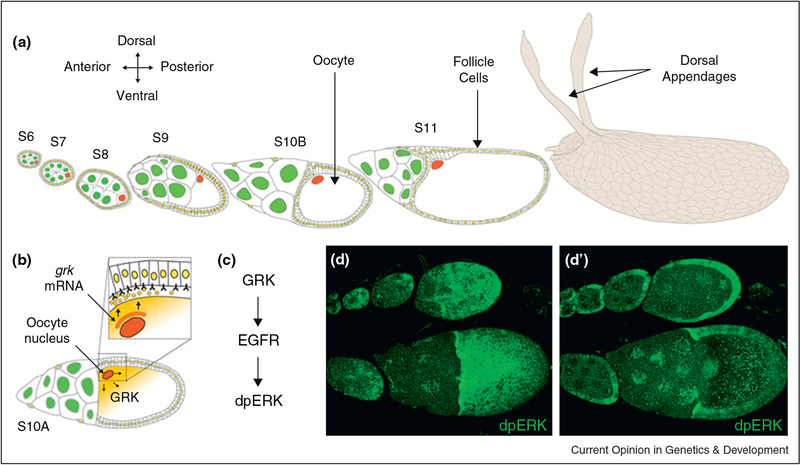Figure 1.
The body axes of the Drosophila eggshell and the future embryo are established by the asymmetrical localization of the oocyte nucleus, and Gurken (GRK) synthesis, during oogenesis, (a) Schematic of egg chamber development during stages 6–11 of oogenesis (left) and the resulting eggshell (right), (b) grk mRNA accumulates in close proximity of the oocyte nucleus. The protein is locally produced by the oocyte and secreted into the perivitelline space, where it diffuses and binds receptors in the surrounding follicle cells, (c) Activation of EGFR by GRK initiates a protein kinase cascade that leads to double phosphorylation of ERK (dpERK). (d-d’) Dorsal surface and cross section views of egg chambers at different stages of oogenesis. The pattern of ERK activation, as recognized by an antibody specific for the double phosphorylated form of the protein, reflects the distribution pattern of the ligand. During early stages (top), dpERK is activated in a posterior-to-anterior gradient, while at late stages (bottom), dpERK is activated in a dorsal-to-ventral gradient.

